With the added burden of becoming the first Australian to win the Masters, Adam Scott stepped it up in 2013 when five shots tested his capacity to become a Major champion. The former world No.1 takes us through those historic plays from Augusta National – and what you can learn and apply to your game.
Photographs by Peter Tarasiuk
I look back on the 2013 Masters with such fond memories, even 10 years later. That’s probably obvious. But I also look back at that Sunday at Augusta and find confidence in some of the shots I executed under pressure: from the chip on the par-5 13th, which got me up and down for birdie, to the drive on the 18th (the 72nd) in regulation which found the first cut of rough but was solid and told me I was in control of the outcome. The pitch shot on the first playoff hole to save par was also clutch. The three-quarter 6-iron I hit from the fairway on No.10, which was the second playoff hole against Angel Cabrera, and the birdie putt on that hole to win the Masters are probably the highlights of my career. I had Steve Williams, arguably the best caddie golf has ever seen, helping me out down the stretch. For you, the average golfer, there is plenty you can learn from those shots. I’m going to take you through how I hit them, and hopefully that can translate to your game the next time you face shots under pressure.

1.THE DRIVE ON 18 (72ND HOLE)
That was maybe the most important drive of my life. I needed to make a confident swing and give myself a chance to hit a good approach and make birdie. I smoked one about 300 yards up the hill and just in the left rough, leaving 164 yards to the green, which is a nice aggressive 8-iron for me. As much as you’re trying to be in control of everything, your emotions and your swing, you’re also trying to let go. You want to just swing and keep your head clear of thoughts. Most of the time, when you’ve got a chance to win on the last hole, you’re playing well, so the confidence is up. The most important thing is to let go, not add anything extra into your routine or an extra look or extra focus.

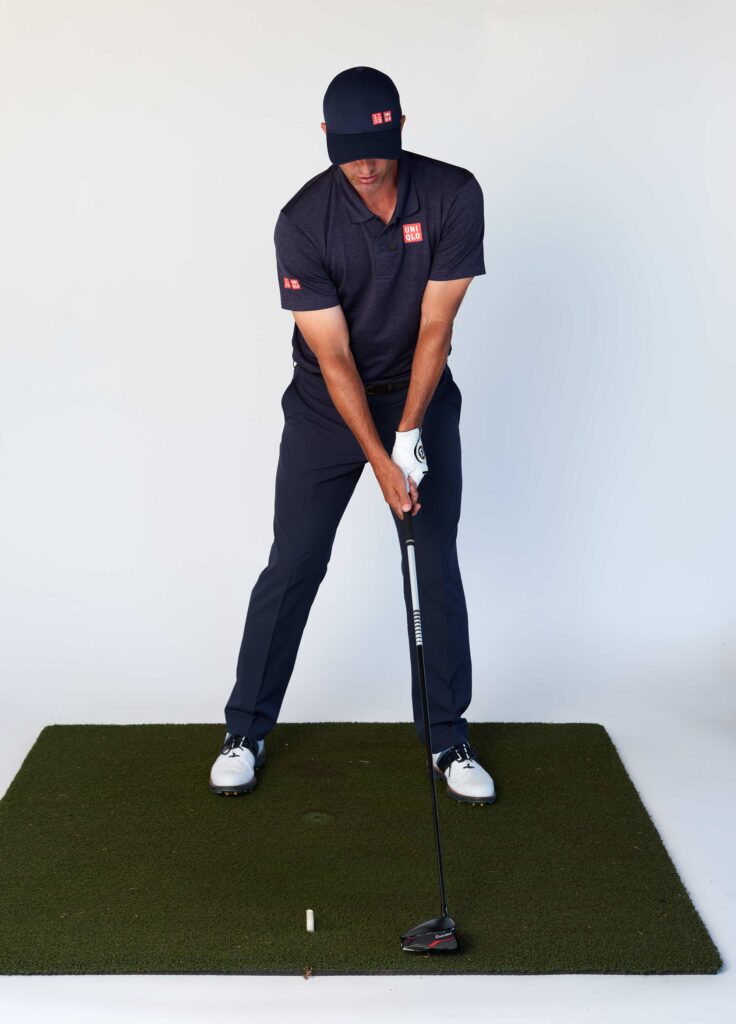

MY TECHNICAL THOUGHTS: It’s more about rhythm. When I watch that swing again, I notice the time I give myself at the top of the backswing. In a pressure moment, that’s huge to allow that club to find its spot and then transition very naturally into the downswing. When I do that, I’m thinking I need to pause at the top. It’s not like Hideki Matsuyama’s pause, though – not an exaggerated pause. For me, a tendency is to go harder on the golf course with adrenaline flowing. I need to remind myself under pressure to swing smoothly and transition naturally and I’ll find the fairway. I try to think about the ball getting in the way. My drive on the 17th that found the fairway was also massive for my confidence. Hitting the 17th fairway I think, for me, was huge at that moment. It was the first time I thought, Right, I’m in position to win the Masters.
ADAM’S ADVICE: ADD SOME LOFT
For the amateur golfer needing to find a fairway under pressure, I’d say just hit a 3-wood [laughs]. The driver’s the biggest nemesis for the average golfer. Amateurs should add more loft on their driver and let the club do more work. I don’t think the average amateur is going to drive it any shorter with more loft, only straighter. I think the lower loft gives a false hope for the amateur that they’re going to increase distance, but it doesn’t really work. Amateurs should tee it a little lower and add some loft to their driver.
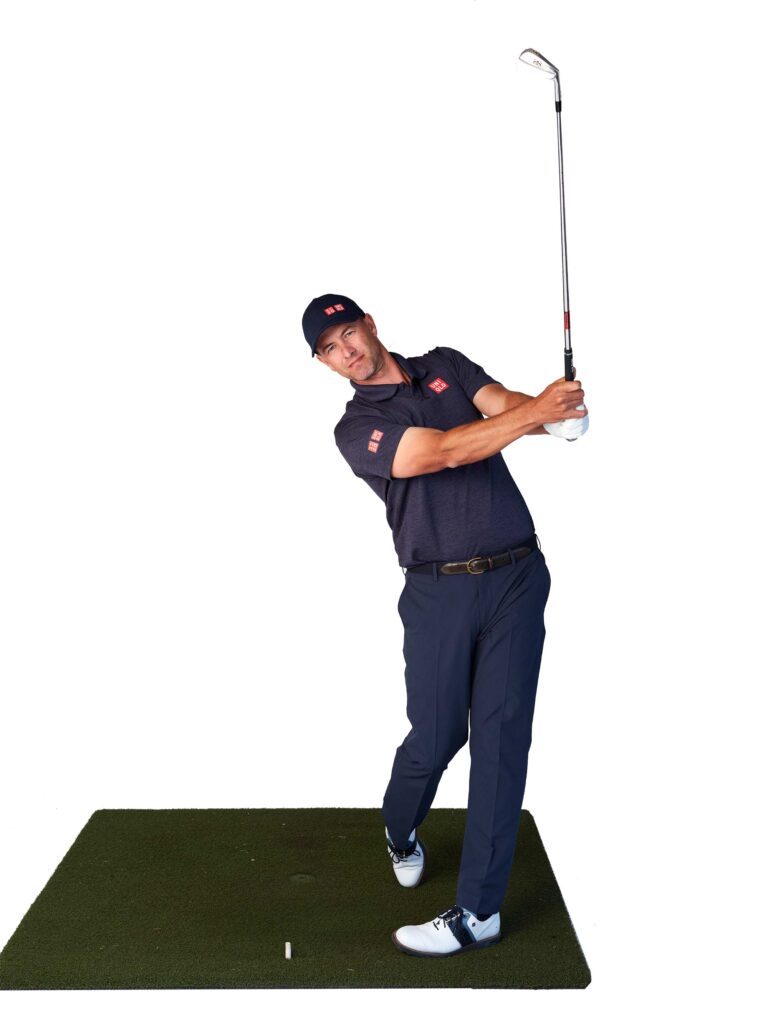
2.THE HOLD-OFF 6-IRON ON 10 (SECOND PLAYOFF HOLE)
Interestingly, in the years leading up to that shot, I had actually practised it for a different hole. The Sunday distance on the par-3 16th had always been between a 7 and 6-iron for me. I’d worked on that shot a lot for a couple years. I needed to hit a three-quarter 6-iron, see it go up the slope on the 16th green and then roll back. The shot on No.10 in the playoff had a similar feeling, except that because the ball was slightly above my feet, it was a hook lie. Practising a version of that shot helped with the confidence to do it at that moment. I was really in control of my game. I was playing great. The important thing was just to make that committed swing under pressure. Steve called it the best shot I’ve ever hit, and I agree. There was obviously a lot on the line and in all the other rounds I’ve played at Augusta, I had never managed to get the ball to that back-left Sunday pin on the 10th. I don’t think I had ever put it pin-high because you fear going left or you fear going long. Technically, it was almost a perfect shot and that’s a great feeling.
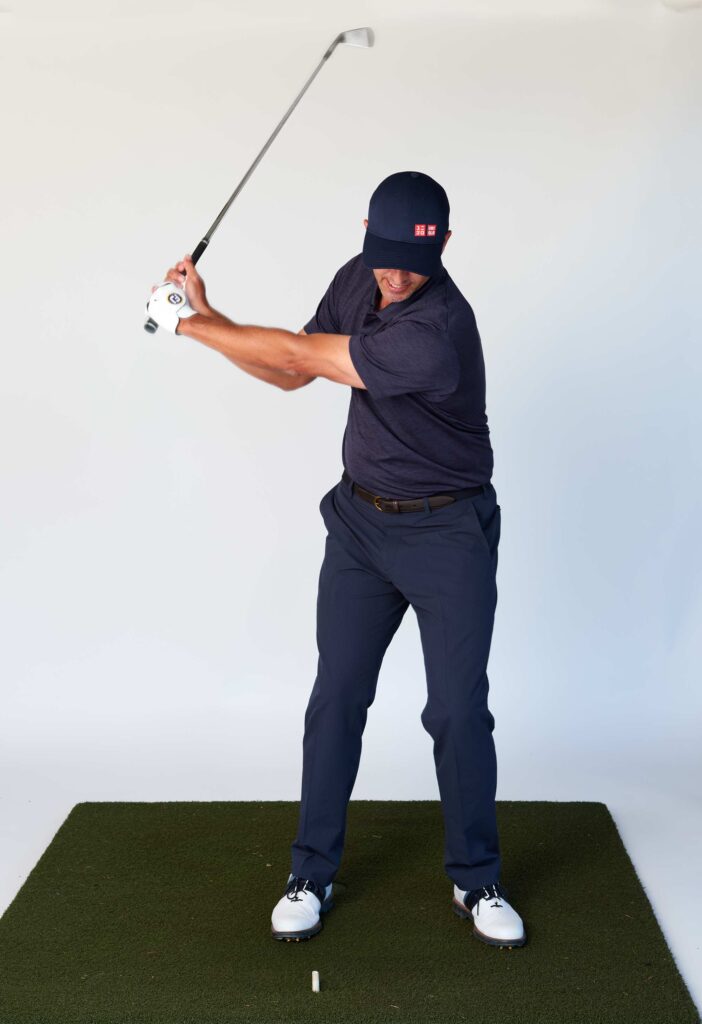
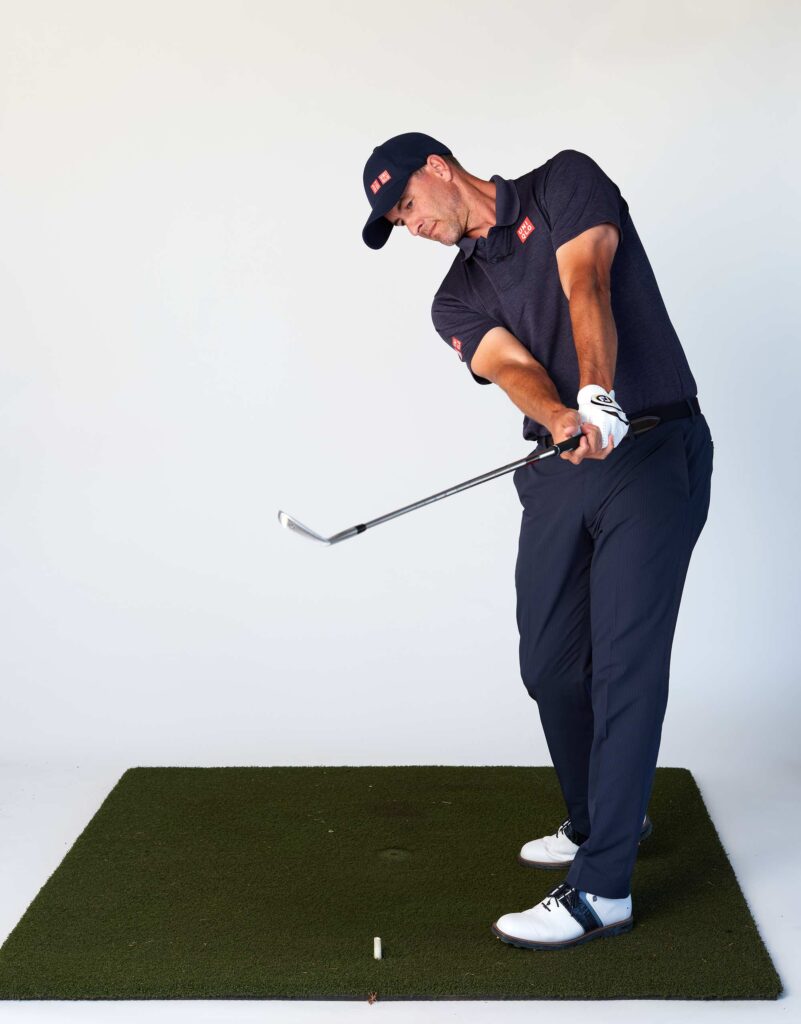
MY TECHNICAL THOUGHTS: I guess some of the technical part of that shot was, it was more of a three-quarter swing [above] than a full-out rip. I think the hardest thing under pressure for a golfer is to slow yourself down. I like to hit hard under pressure; it’s easier to just fire. For that one, it was three quarters and I felt like I was just waiting for it to get to that three-quarter backswing and then smoothing the downswing as though I’m on a driving range. I told myself in that 10th fairway to hit a driving range 6-iron. Usually on the range you’re smoothing it and on the course you start ripping at it. I also needed to fight the hook lie, because I needed the ball to land on that tricky 10th green with fade spin, and not turn left. So, my swing thought was just to hold onto a square face a little bit through the ball [main], instead of letting it release past me. Picture the clubhead moving really straight after the strike and not closing, but staying square. If you hold it square while your body is turning through, it makes it easier to hold that swing path in a square position which prevents a left miss when you can’t afford it.
ADAM’S ADVICE: GO WITH YOUR ‘DRIVING RANGE SWING’
If it’s not your natural thing to swing smooth, it’s a shot all amateurs need to practise and to be aware of. You probably have a driving-range speed swing and a golf-course swing. Even if you’re not going to win your club championship, if you find yourself struggling on the course, try to take yourself back to that driving-range swing for smoothness and rhythm. Whenever you’re swinging poorly, or need to swing well under pressure, you’d be surprised how often you’ll pull out a brilliant strike if you focus on smoothness and rhythm. It’s a great swing fix.
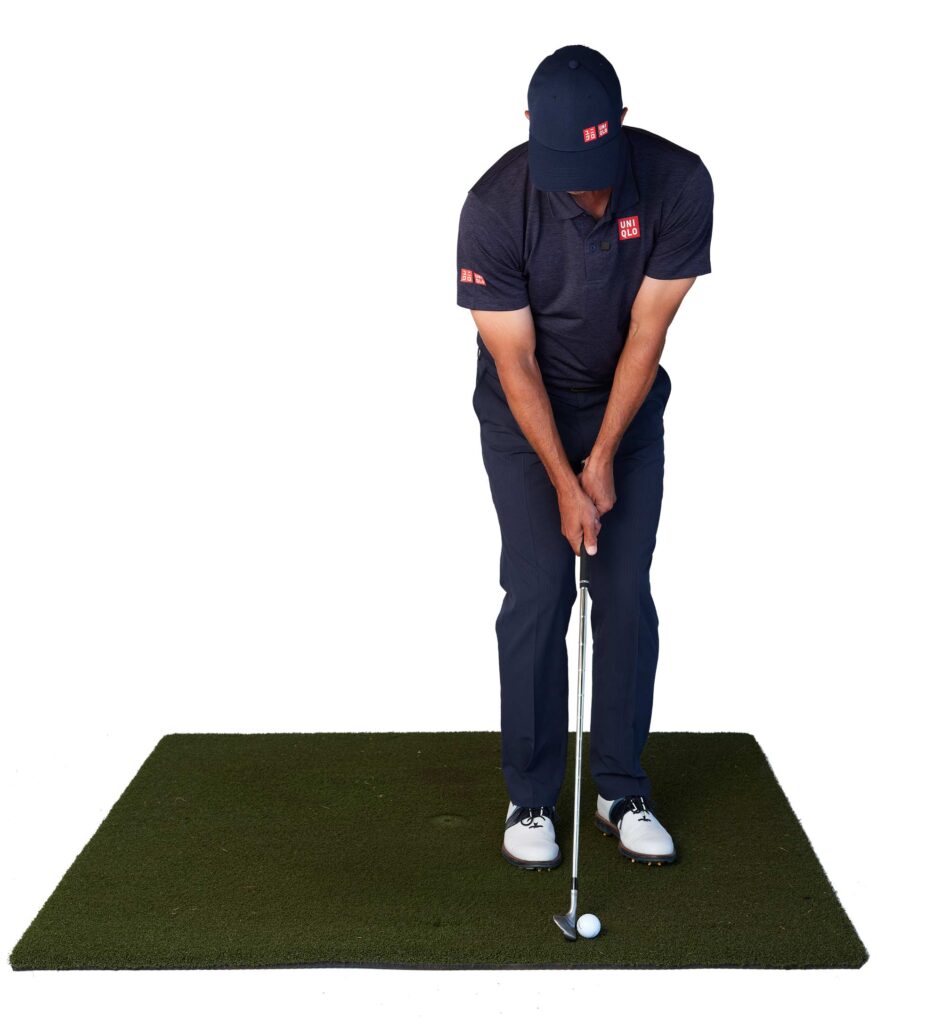
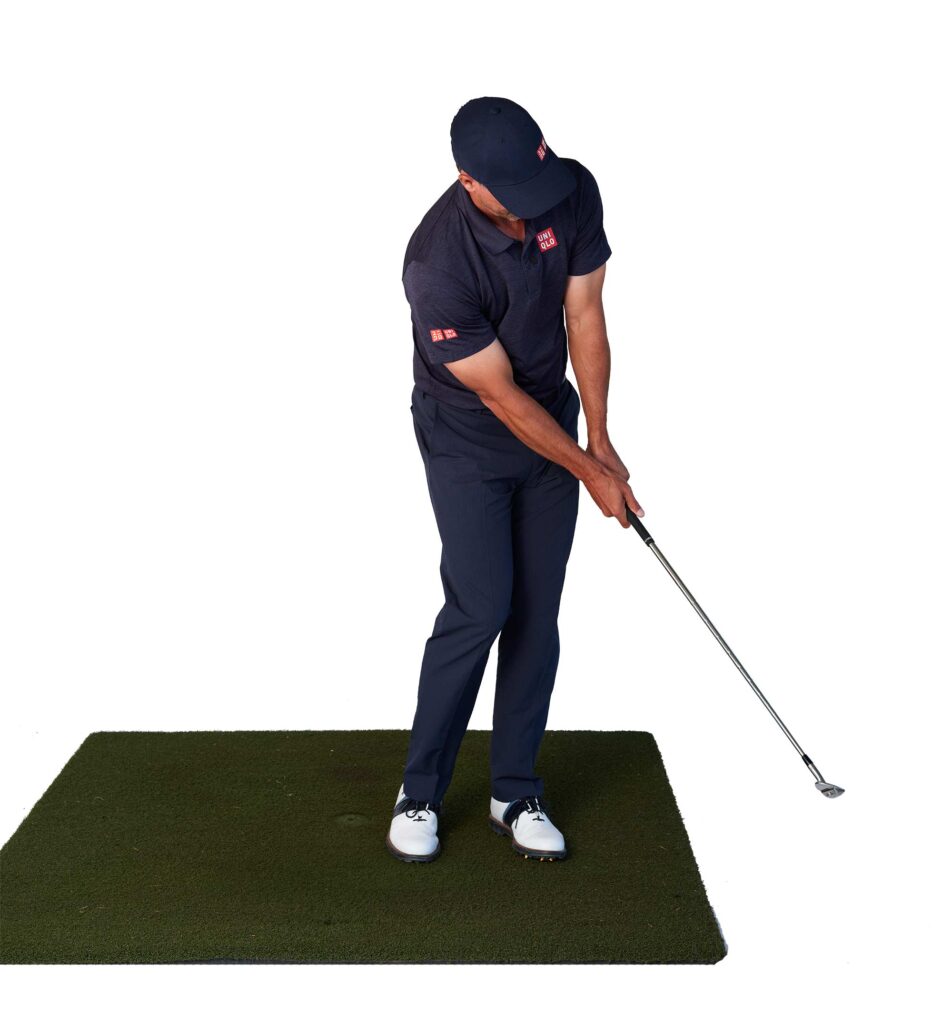
3.THE CHIP ON 18 (FIRST PLAYOFF HOLE)
Angel Cabrera and I had both missed the green short in that first playoff hole. Angel went first, and nearly holed it, so the pressure was on me to make par. It’s funny, when Steve first started to caddie for me, he told me I had a pretty average short game. I had to do a bit of work and I improved. I really mastered that basic chip shot.
MY TECHNICAL THOUGHTS: I have this theory, that whatever club I think the chip shot calls for I should always go down one club in loft and get it to the hole. I have a tendency to leave chips short. At least this method, I might get it to the hole, or maybe the hole will get in the way. That chip shot called for a sand wedge (56 degrees), but I went with a 52-degree wedge. Technically speaking, chipping from the fairway, the strike becomes so important, and the precision of the strike is crucial. When you have a lot of grass, if your chipping action is nice and shallow – not too steep and upright – you can use the bounce to give yourself a lot of margin for error. You can dump the club behind the ball and still get some flight and spin on it.
ADAM’S ADVICE: NEVER BE EMBARRASED TO PULL OUT THE ‘TEXAS WEDGE’
I think it’s really important to understand how the grass may affect the club’s interaction with your ball. If the lie is too tight or intrusive, I’m not embarrassed to go with the trusty ‘Texas wedge’ (putter). Putting from the fairway or off the green, when it’s looking a little sketchy, is a smart decision. I also think using the bounce on a pitching wedge with an open clubface really gives the average player a lot of room for error and, when they hit it nicely, the shot comes out on the flight they would get with a lob wedge due to the face being open. You’ll think it’ll go too low because it’s a pitching wedge, but it won’t. It’ll still go up, and the bounce will actually really help. If you get a chance to practise, mess around with lob wedges, sand wedges and your pitching wedge and open up a pitching wedge with some loft and start banging the club into the ground [left]. It won’t get stuck. I think the other key for amateurs is when they get on a slope to chip, it’s good to adjust yourself to the upslope, especially the shoulders as much as anything. At least you’re then starting on a neutral swing path and natural instinct can take over in the swing.
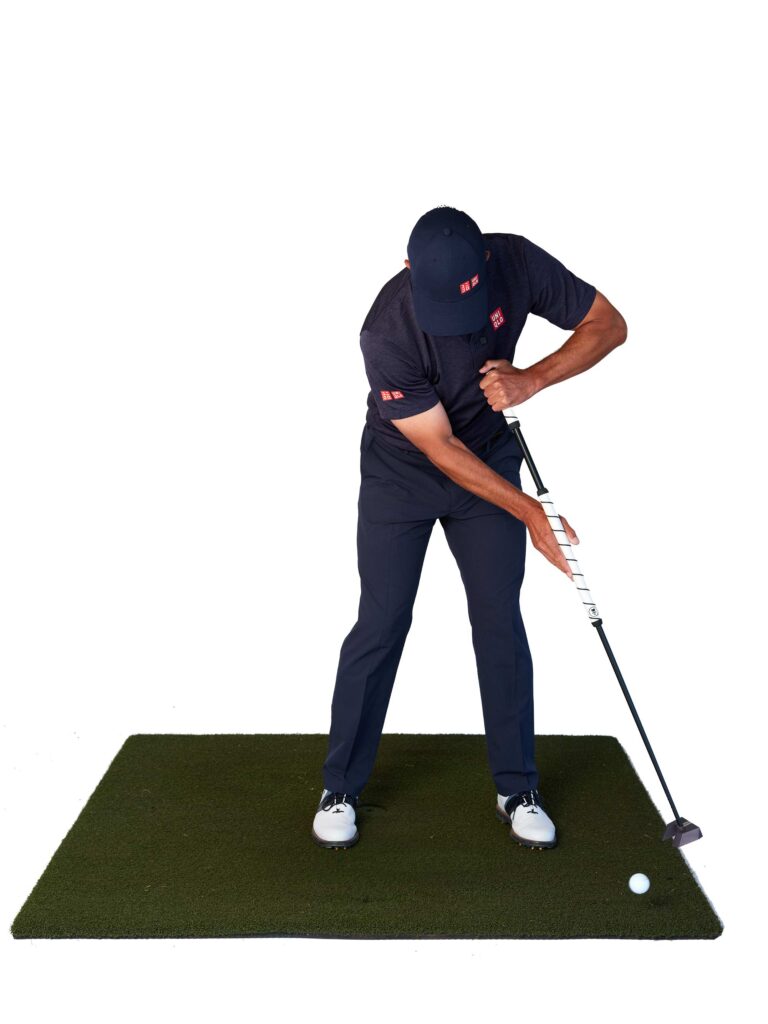
4.THE PUTT ON 18 (72ND HOLE)
I really didn’t make too many putts on Sunday. I made a putt for birdie on short par-4 third and then the next decent putt I made was for birdie on the 18th. I needed to get to nine-under, and at the time I thought that score had a decent chance to win, which is why I celebrated and shouted, “C’mon, Aussie!” Turns out Angel matched it and a playoff was on. What I did do that day was make almost every putt from six feet and in. I was playing so well, I didn’t have to make anything else, other than the putt at the end and I made it at the right time, on the 72nd hole, and then again on the second playoff hole. I was confident with the putter, but I just didn’t have my best day on the greens. It wasn’t like a fairytale where everything was rolling in, but I stayed patient and then made the putts that mattered most.
MY TECHNICAL THOUGHTS: I knew that putt well. I called it the “O’Meara putt” after Mark O’Meara made it to win the 1998 Masters. It breaks gently from right to left, and it’s quick but not too quick. I knew a positive stroke on the read, which was just outside the right edge, was going to be good enough to hole it. All I was thinking was, A positive stroke. Just get the putterhead through the ball nicely [right], because I trusted my read and obviously, through practice, I trusted my alignment.
ADAM’S ADVICE: PRACTISE STROKE AND RHYTHM FROM ALL DISTANCES
It’s so important to dial in your alignment with your putter and to have an idea of speed. Those two things will literally have you holing more putts. If you use the markings on top of your putter as a guide to align your feet and shoulders, your putts will start to take off on the line you intend. That breeds confidence. And if you practise the stroke and rhythm needed for six-footers, 10-footers, 15-footers, 20-footers, that’s when the putts will begin to drop because they’ll always have a chance to get to the hole.
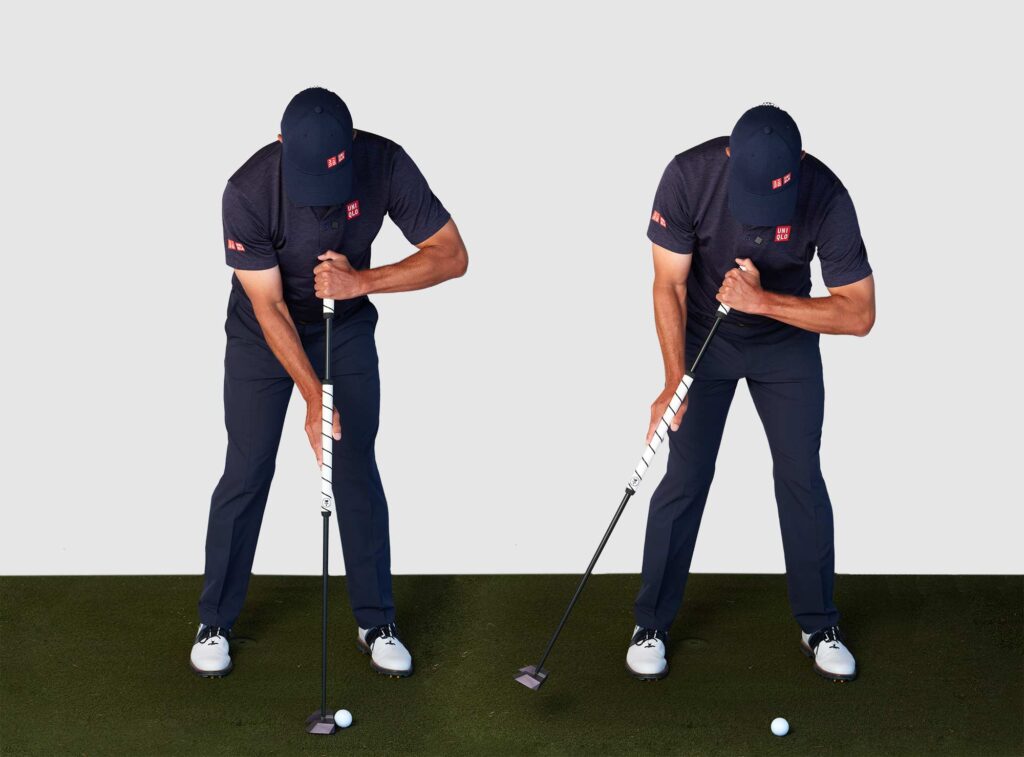
5.THE PUTT ON 10 IN THE PLAYOFF (TO WIN THE MASTERS!)
At that point in the final round, with darkness approaching, Steve was reading the greens with me, and Steve’s a good green reader. He’s quite a good putter, actually, so that was always a good thing to have in a caddie. But the most important thing when caddies and players are reading greens, is they understand what speed the putt is going to need. At that point Steve had worked for me for a couple of years and he knew how firm I hit my putts. It was a great conversation because it was getting late in the day and we both knew there were probably no more holes to be played, and I had a putt for the win.
MY TECHNICAL THOUGHTS: Hit the line! I just had to start the putt where Steve had told me to. That’s it. I knew with the slick 10th green the ball was going to get to the hole with my natural putting ability, so all I had to do was hit the line. It’s funny, Steve and I had a discussion about the read. It was dark, and I thought the line was one cup outside the right edge. Steve said, and I’ll never forget it, “That’s not even f—ing close. It’s two-and-a-half cups outside right.” He was so confident and he said he’d seen the putt, so he knew it broke harder than I thought. I trusted him, picked my two-and-a-half-cup line and hit the putt at the line. The rest, as they say, is history.
ADAM’S ADVICE: FORGET THE CUP, AIM AT YOUR TARGET LINE
Think about where you want to start all your putts. Your target should almost never be the cup unless it’s a dead straight putt. If it’s two-and-a-half cups outside right, look at that spot and then adjust the length depending on how quick or slow it is. Focus on that spot, not the hole, and stroke the putt towards that target [above]. You’ll be surprised how close you start getting your putts, and how many start dropping.
